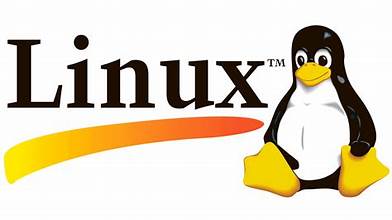Day 1: History of Linux
 Sekhar Perathur
Sekhar Perathur
Introduction to Linux Operating System
To understand the history of Linux, we first need to look at the origins of Unix:
In the 1960s, AT&T Bell Labs, GE, and MIT began working together on a project called Multics, an early operating system.
However, the Multics project was eventually halted due to delays.
Two developers, Dennis Ritchie and Ken Thompson, continued the effort and created Unix, a simpler and more efficient operating system.
Later, the University of California at Berkeley expanded Unix by adding new features, creating a version known as BSD Unix (Berkeley Software Distribution).
Over time, major companies like IBM, Sun Microsystems, and HP developed their own Unix versions based on two main variants: AT&T Unix and BSD Unix.
IBM’s version of Unix is called AIX, Sun Microsystems developed SunOS (later renamed Solaris), and HP’s version is known as HP-UX.
To standardize Unix across different vendors, Unix System V was introduced, creating a common specification for all Unix versions. System V Release 4 became the most commercially successful release.
What is Linux Operating System
The Linux Operating System is an open-source, Unix-like operating system that is widely used for everything from personal computers to servers, embedded systems, and supercomputers. Created by Linus Torvalds in 1991, Linux is based on the principles of Unix and offers a free, customizable, and community-driven alternative to other operating systems.
The GNU Project was started by Richard Stallman to create a free, Unix-like operating system.
"GNU" stands for "GNU's Not Unix!"—a fun, recursive acronym.
The GNU Project developed many useful programs but still needed a core component called a "kernel" to complete the system.
In 1991, Linus Torvalds created the Linux kernel, a Unix-like core for operating systems.
The Linux kernel provided the missing piece for the GNU Project, allowing it to become a complete, free operating system.
Understanding the software Versions for Linux Operating system releases
The Linux Mainline Kernel team, led by Linus Torvalds, releases updates about every three months to keep the Linux kernel up-to-date with the latest hardware improvements and performance upgrades. This development is a continuous process, as the kernel needs to evolve to support new technology.
For managing these updates, the team relies on a version control tool called Git. Version control tools like Git are essential in software projects, as they help track changes, manage updates, and enable collaboration across the development team. Git, created by Torvalds himself, is the backbone for organizing and maintaining each new version of the Linux kernel, ensuring smooth and structured development.
Linux Distributions/Distros
A Linux distributions, or “distros,” is a version of the Linux operating system that includes the Linux kernel (the core part of the OS) along with additional software, tools, and libraries. These extra components often include GNU tools, office software like LibreOffice, and a desktop environment for a complete user experience.
There are many types of Linux distributions, each tailored for different purposes:
Enterprise-focused distros: These are designed for businesses and servers. Examples include Red Hat Enterprise Linux, Oracle Linux, and SUSE Linux, known for their stability and support.
Desktop-focused distros: These are popular with individual users for personal computers. Examples include Ubuntu and Linux Mint, which are known for being user-friendly and visually appealing.
Community-driven distro: Fedora, backed by Red Hat, is a community-powered version that focuses on the latest features and serves as a testing ground for new innovations.
Each distro offers a unique experience, giving users the freedom to choose what best fits their needs.
Subscribe to my newsletter
Read articles from Sekhar Perathur directly inside your inbox. Subscribe to the newsletter, and don't miss out.
Written by

Sekhar Perathur
Sekhar Perathur
My name is Sekhar, a dedicated Cloud and DevOps engineer having experience in optimizing cloud infrastructure and streamlining IT operations. Proficient in technologies like AWS, Azure, Docker, Kubernetes, and Terraform, I specialize in building scalable, automated solutions that drive efficiency. I excel in configuration management, CI/CD, and cloud orchestration, helping teams achieve operational excellence. Currently, I am striving to expand my expertise by taking on a new role in the Cloud Center of Excellence, where I’m focused on innovating cloud strategies and leading best practices for enterprise-level cloud adoption.